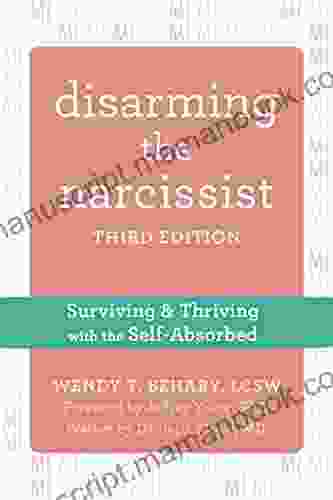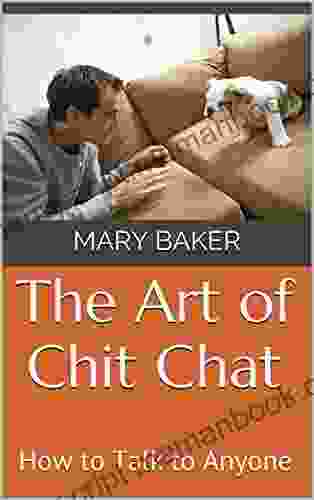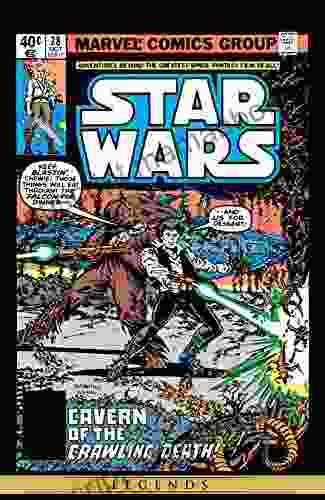How to Talk to Anyone: A Comprehensive Guide to Communicating with Confidence

5 out of 5
| Language | : | English |
| File size | : | 434 KB |
| Text-to-Speech | : | Enabled |
| Screen Reader | : | Supported |
| Enhanced typesetting | : | Enabled |
| Word Wise | : | Enabled |
| Print length | : | 19 pages |
Communication, the intricate art of exchanging thoughts, ideas, and feelings, plays a pivotal role in shaping our lives. From building meaningful relationships to advancing our careers, effective communication is a cornerstone of human interaction. However, for many, the prospect of engaging in conversations can evoke feelings of anxiety and unease. The fear of awkward silences, misinterpretations, and social missteps can hinder our ability to connect with others. But what if we told you that communicating with confidence and ease is an attainable skill, one that can be cultivated with practice and the right guidance?
This comprehensive guide will equip you with the knowledge and techniques you need to overcome communication barriers and become a master conversationalist. Whether you're an introvert seeking to break out of your shell or an extrovert looking to enhance your social skills, this guide has something to offer everyone.
Chapter 1: The Art of Conversation Starters
Initiating conversations can be a daunting task, but with the right approach, it can be a breeze. The key is to find common ground and choose topics that genuinely interest both parties. Here are a few tips for starting conversations with confidence:
- Observe your surroundings: Pay attention to the environment and use it as a source of conversation starters. Comment on the weather, the venue, or a nearby event.
- Ask open-ended questions: Instead of yes/no questions, pose questions that encourage the other person to elaborate and share their thoughts.
- Compliment genuinely: Offer a sincere compliment on the other person's appearance, work, or accomplishments. Just be sure to avoid sounding flattering or insincere.
- Share a personal experience: Relate a personal anecdote or experience that is relevant to the conversation topic.
- Use humor (appropriately): A well-timed joke or funny anecdote can break the ice and create a relaxed atmosphere.
Chapter 2: The Power of Active Listening
Listening is an essential component of effective communication. When you listen actively, you not only demonstrate respect for the speaker but also gain a deeper understanding of their perspective. Here are some tips for becoming an active listener:
- Give your undivided attention: Put away distractions, make eye contact, and focus on what the other person is saying.
- Show empathy: Try to understand the speaker's emotions and perspectives, even if you don't necessarily agree with them.
- Ask clarifying questions: If something is unclear, ask questions to ensure you fully comprehend the message.
- Summarize and paraphrase: Repeat back what you've heard in your own words to demonstrate understanding and encourage further communication.
- Avoid interrupting: Allow the speaker to finish their thoughts before interjecting your own opinions or experiences.
Chapter 3: The Importance of Nonverbal Communication
Body language speaks volumes, often conveying more than words alone. By understanding and utilizing nonverbal cues, you can enhance your communication and build stronger connections.
- Maintain eye contact: Eye contact is crucial for establishing trust and rapport. Aim for 50-60% eye contact, but avoid staring or making others uncomfortable.
- Use appropriate gestures: Hand gestures and body movements can emphasize your points and make your communication more engaging.
- Pay attention to posture: Good posture conveys confidence and makes you more approachable.
- Mirror body language: Subtly mirroring the other person's body language can create a sense of rapport and empathy.
- Be aware of personal space: Respect the other person's personal space and maintain a comfortable distance.
Chapter 4: Building Strong Relationships Through Communication
Communication is the cornerstone of building strong, lasting relationships. By fostering meaningful conversations, empathizing with others, and being supportive, you can create connections that enrich your life. Here are some tips for building relationships through communication:
- Be genuine and authentic: People can sense when you're being fake, so be yourself and let your genuine personality shine through.
- Show interest in others: Ask questions, listen attentively, and show that you genuinely care about the other person's life and experiences.
- Be supportive and empathetic: Offer support and understanding when others confide in you. Let them know that you're there for them.
- Practice active listening: Really listen to what others have to say and demonstrate your understanding through summarizing and paraphrasing.
- Be willing to compromise: Relationships require give and take. Be willing to compromise to find mutually satisfying solutions.
Mastering the art of communication is a journey, not a destination. With practice and dedication, you can overcome your fears and become a confident and effective communicator. Embrace the power of conversation starters, active listening, nonverbal cues, and relationship-building techniques. By implementing these strategies, you can unlock the door to meaningful connections, advance your career, and live a more fulfilling life. Remember, the ability to communicate effectively is a superpower that can transform both your personal and professional interactions. Embrace it, and watch your world blossom.
5 out of 5
| Language | : | English |
| File size | : | 434 KB |
| Text-to-Speech | : | Enabled |
| Screen Reader | : | Supported |
| Enhanced typesetting | : | Enabled |
| Word Wise | : | Enabled |
| Print length | : | 19 pages |
Do you want to contribute by writing guest posts on this blog?
Please contact us and send us a resume of previous articles that you have written.
 Top Book
Top Book Novel
Novel Fiction
Fiction Nonfiction
Nonfiction Literature
Literature Paperback
Paperback Hardcover
Hardcover E-book
E-book Audiobook
Audiobook Bestseller
Bestseller Classic
Classic Mystery
Mystery Thriller
Thriller Romance
Romance Fantasy
Fantasy Science Fiction
Science Fiction Biography
Biography Memoir
Memoir Autobiography
Autobiography Poetry
Poetry Drama
Drama Historical Fiction
Historical Fiction Self-help
Self-help Young Adult
Young Adult Childrens Books
Childrens Books Graphic Novel
Graphic Novel Anthology
Anthology Series
Series Encyclopedia
Encyclopedia Reference
Reference Guidebook
Guidebook Textbook
Textbook Workbook
Workbook Journal
Journal Diary
Diary Manuscript
Manuscript Folio
Folio Pulp Fiction
Pulp Fiction Short Stories
Short Stories Fairy Tales
Fairy Tales Fables
Fables Mythology
Mythology Philosophy
Philosophy Religion
Religion Spirituality
Spirituality Essays
Essays Critique
Critique Commentary
Commentary Glossary
Glossary Bibliography
Bibliography Index
Index Table of Contents
Table of Contents Preface
Preface Introduction
Introduction Foreword
Foreword Afterword
Afterword Appendices
Appendices Annotations
Annotations Footnotes
Footnotes Epilogue
Epilogue Prologue
Prologue Anatole Kaletsky
Anatole Kaletsky Melissa Palmer
Melissa Palmer Thomas E Ricks
Thomas E Ricks Cindy Bracken
Cindy Bracken William Shakespeare
William Shakespeare Juliet Anderson
Juliet Anderson Ken Follett
Ken Follett William A Graham
William A Graham Alastair Brown
Alastair Brown Victor Sampson
Victor Sampson Tom Beal
Tom Beal Sarika Patkotwar
Sarika Patkotwar Nitish Singh
Nitish Singh Amorette Anderson
Amorette Anderson J R Adler
J R Adler Kalynn Campbell
Kalynn Campbell Alison Deering
Alison Deering Kei Sasuga
Kei Sasuga Rebecca Schaefer
Rebecca Schaefer Sheema Farooqi
Sheema Farooqi
Light bulbAdvertise smarter! Our strategic ad space ensures maximum exposure. Reserve your spot today!
 Gustavo CoxFollow ·3.6k
Gustavo CoxFollow ·3.6k Cooper BellFollow ·9.4k
Cooper BellFollow ·9.4k Galen PowellFollow ·13.1k
Galen PowellFollow ·13.1k Jack PowellFollow ·15.4k
Jack PowellFollow ·15.4k Aubrey BlairFollow ·10.8k
Aubrey BlairFollow ·10.8k Chance FosterFollow ·2.3k
Chance FosterFollow ·2.3k Eric HayesFollow ·19.7k
Eric HayesFollow ·19.7k Austin FordFollow ·7.3k
Austin FordFollow ·7.3k

 Jaylen Mitchell
Jaylen MitchellPretime Piano Jazz Blues Primer Level: A Comprehensive...
The Pretime Piano...

 Mark Twain
Mark TwainSurviving and Thriving with the Self-Absorbed: A...
Interacting with self-absorbed...

 John Keats
John KeatsTo Love Is To Surrender: A Deep Dive into the...
Surrender is one of the most enigmatic and...

 Steven Hayes
Steven HayesRich Murphy: A Visionary Engineer Shaping the Future of...
In the annals of space...

 Neil Parker
Neil ParkerProper Love: Navigating the Hardships of the Heart
Love is a beautiful emotion that can bring...
5 out of 5
| Language | : | English |
| File size | : | 434 KB |
| Text-to-Speech | : | Enabled |
| Screen Reader | : | Supported |
| Enhanced typesetting | : | Enabled |
| Word Wise | : | Enabled |
| Print length | : | 19 pages |














